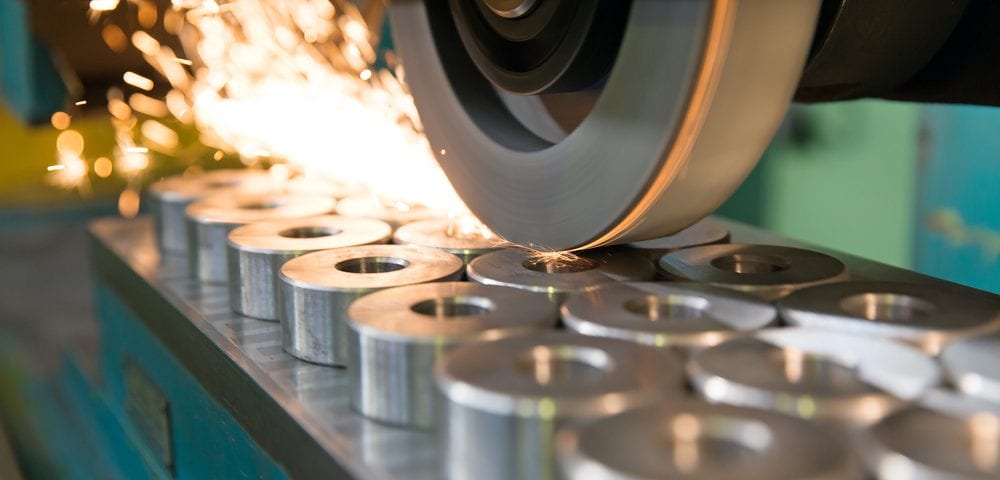How to Clean Stainless Steel Surfaces

Value of Steel in the Automotive Industry
December 26, 2023
Can You Solder Stainless Steel Products?
January 29, 2024There are several major benefits of the uses of stainless steel in various structural and other applications, and one of these is the incredible versatility of stainless steel products. This versatility is evident in a number of different important areas, and the variety of robust cleaning methods that can be applied to stainless steel is a great example.
At Wasatch Steel, we’re here to provide a wide range of steel sheet, steel tube and various other steel products to clients around Salt Lake City and other parts of Utah, including stainless steel for many applications. Here are some basics on why cleaning stainless steel surfaces periodically is important, plus some of the different solutions and approaches that can be considered here depending on the circumstances and the need.
Why Cleaning Stainless Steel Periodically is Important
Firstly, let’s discuss why cleaning stainless steel surfaces periodically is important. Stainless steel is a durable material that can resist corrosion and staining, but this doesn’t mean it’s completely maintenance-free. In order to maintain its appearance and integrity, regular cleaning is necessary.
Stainless steel surfaces can accumulate dirt, grime, fingerprints, and other contaminants that can impact the surface finish if left uncleaned for prolonged periods. These contaminants can also lead to bacterial growth, which is a concern in applications where hygiene is critical. Regular cleaning ensures that stainless steel surfaces maintain their aesthetic appeal and functionality for longer periods.
Now let’s look at some of the various methods that you can use to clean your stainless steel products depending on the type and extent of soiling.
Specific Stainless Steel Cleaners
In many situations, easily the most robust option for cleaning stainless steel surfaces is using a specific cleaner designed for the task at hand. These cleaners are specially formulated to remove dirt, grime, and other types of soiling without damaging the surface.
Some of these cleaners come in spray bottles or wipes to make cleaning easier and more convenient. Always ensure that you follow instructions carefully when using these cleaners to avoid any potential damage.
Also, be sure that any such cleaner you select does not include chlorine as an ingredient. This can react negatively with stainless steel, causing discoloration and other issues that may require professional intervention.
WD-40
You may be surprised to see the inclusion of WD-40 here, as it’s often associated with lubrication and not cleaning. However, WD-40 is an excellent option for removing grime and dirt from stainless steel surfaces without leaving any greasy residue. Simply spray a small amount onto the surface and wipe it away with a clean cloth.
In fact, WD-40 is often used for not just cleaning stainless steel surfaces, but even helping protect them moving forward. It often helps limit the presence of lingering fingerprints or other visual imperfections that can detract from the aesthetic appeal of these surfaces. Furthermore, because you don’t have to use any soap and water along with it, this is a simple and straightforward cleaning method.
Vinegar and Water
If you’re looking for a more natural option, consider using vinegar and water to clean your stainless steel products. Mix equal parts of white vinegar and water in a spray bottle, spray onto the surface, and wipe away with a microfiber cloth. This solution is effective at removing dirt, grime, and even light stains.
However, avoid using this method on surfaces that are frequently exposed to acidic substances or acidic cleaners. The high acidity of vinegar can damage the stainless steel surface in these cases.
Baking Soda Paste
For tougher stains and grime buildup, consider using a baking soda paste. Mix baking soda with water until you have a thick paste, then apply it to the soiled area and scrub gently with a soft cloth or sponge. Rinse thoroughly with water and dry with a clean cloth. This method is gentle yet effective at removing stubborn stains without causing damage.
Window Cleaners
While we generally don’t recommend window cleaner products for a full stainless steel cleaning, they’re quite useful for clearing fingerprints and other small marks on stainless steel surfaces without any water or additional cleaning agents needed. Simply spray the window cleaner onto a soft cloth and wipe over the surface, then dry with a clean cloth.
There are various methods and solutions available for cleaning stainless steel surfaces depending on your specific needs and preferences. Regular cleaning is important to maintain the appearance and functionality of these products, and with the right approach, you can keep your stainless steel looking great for years to come. So whether you’re in need of stainless steel for structural purposes or other applications such as kitchen equipment or medical devices, be sure to keep these cleaning methods in mind for optimal maintenance.
At Wasatch Steel, we’re always here to help with any steel supply needs or questions you may have. Contact us today for more information about our products and services for clients around SLC and other parts of Utah.



